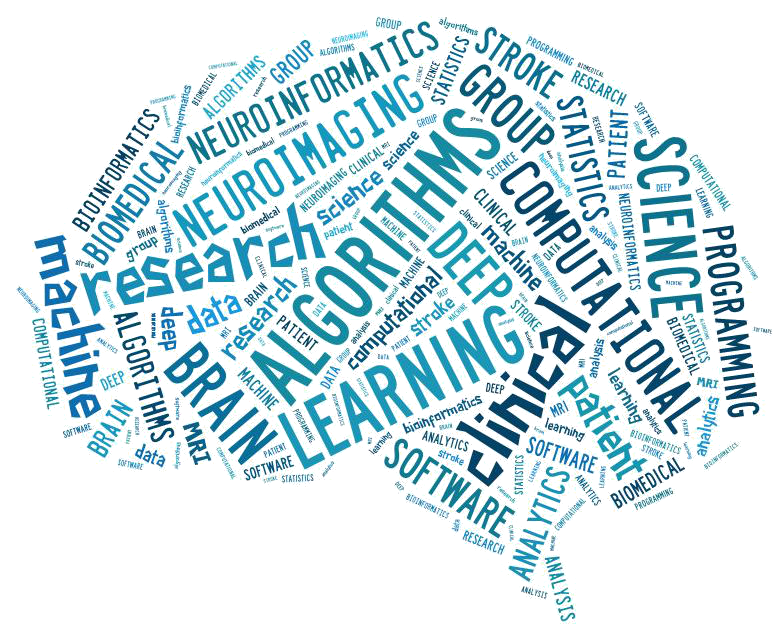Huisman TAGM, Schwamm LH, Schaefer PW, Koroshetz WJ, Shetty-Alva N, Ozsunar Y, Wu O, Sorensen GA.
Diffusion tensor imaging as potential biomarker of white matter injury in diffuse axonal injury. AJNR Am J Neuroradiol 2004;25(3):370-6.
AbstractBACKGROUND AND PURPOSE: Multiple biomarkers are used to quantify the severity of traumatic brain injury (TBI) and to predict outcome. Few are satisfactory. CT and conventional MR imaging underestimate injury and correlate poorly with outcome. New MR imaging techniques, including diffusion tensor imaging (DTI), can provide information about brain ultrastructure by quantifying isotropic and anisotropic water diffusion. Our objective was to determine if changes in anisotropic diffusion in TBI correlate with acute Glasgow coma scale (GCS) and/or Rankin scores at discharge.
METHODS: Twenty patients (15 male, five Female; mean age, 31 years) were evaluated. Apparent diffusion coefficients (ADCs) and fractional anisotropy (FA) values were measured at multiple locations and correlated with clinical scores. Results were compared with those of 15 healthy control subjects.
RESULTS: ADC values were significantly reduced within the splenium (Delta18%, P =.001). FA values were significantly reduced in the internal capsule (Delta14%; P <.001) and splenium (Delta16%; P =.002). FA values were significantly correlated with GCS (r = 0.65-0.74; P <.001) and Rankin (r = 0.68-0.71; P <.001) scores for the internal capsule and splenium. The correlation between FA and clinical markers was better than for the corresponding ADC values. No correlation was found between ADC of the internal capsule and GCS/Rankin scores.
CONCLUSION: DTI reveals changes in the white matter that are correlated with both acute GCS and Rankin scores at discharge. DTI may be a valuable biomarker for the severity of tissue injury and a predictor for outcome.
Ozsunar Y, Grant EP, Huisman TAGM, Schaefer PW, Wu O, Sorensen GA, Koroshetz WJ, Gonzalez GR.
Evolution of water diffusion and anisotropy in hyperacute stroke: significant correlation between fractional anisotropy and T2. AJNR Am J Neuroradiol 2004;25(5):699-705.
AbstractBACKGROUND AND PURPOSE: We hypothesized that, in acute cerebral ischemic stroke, anisotropic diffusion increases if T2 signal intensity is not substantially elevated and decreases once T2 hyperintensity becomes apparent. Our purpose was to correlate fractional anisotropy (FA) measurements with the clinical time of stroke onset, apparent diffusion coefficients (ADC), and T2 signal intensity.
METHODS: Tensor diffusion-weighted images (DWIs) of 25 patients were obtained within 12 hours of symptom onset. Trace DWIs, ADCs, FAs, and echo-planar T2-weighted images (T2WI) were generated. Stroke and contralateral normal volumes of interest (VOIs) were outlined on DWIs and projected onto the inherently coregistered ADC map, FA map, and echo-planar T2WI. Mean signal intensity of the ischemic and contralateral normal VOIs were compared for relatives change in ADC, FA, and signal intensity on T2WIs.
RESULTS: A significant negative correlation was observed between FA and T2 signal-intensity change (r = -0.61, P =.00009). A trend of correlation between FA signal intensity and time of onset were found (r = -0.438, P =.025). No significant correlation was found between ADC and FA values (r = -0.302, P =.134). The mean ADC reduction in the ipsilateral ischemic volume was 31% +/- 11 compared with the contralateral normal side.
CONCLUSION: Change in FA is inversely correlated with T2 signal intensity and, to a lesser extent, the time of onset, but it is not well correlated with ADC values in the acute stage.
van Eijsden P, Notenboom RGE, Wu O, de Graan PNE, van Nieuwenhuizen O, Nicolay K, Braun KPJ.
In vivo 1H magnetic resonance spectroscopy, T2-weighted and diffusion-weighted MRI during lithium-pilocarpine-induced status epilepticus in the rat. Brain Res 2004;1030(1):11-8.
AbstractTemporal lobe epilepsy (TLE) is associated with febrile convulsions and childhood status epilepticus (SE). Since the initial precipitating injury, triggering epileptogenesis, occurs during this SE, we aimed to examine the metabolic and morphological cerebral changes during the acute phase of experimental SE noninvasively. In the rat lithium-pilocarpine model of SE, we performed quantified T(2)- and isotropic-diffusion-weighted (DW) magnetic resonance imaging (MRI) at 3 and 5 h of SE and acquired single-voxel (1)H MR spectra at 2, 4 and 6 h of SE. T(2) was globally decreased, most pronounced in the amygdala (Am) and piriformic cortex (Pi), in which also a significant decrease in apparent diffusion coefficient (ADC) was found. In contrast, ADC values increased transiently in the hippocampus (HC) and thalamus (Th). MR spectra showed a decrease in N-acetylaspartate (NAA) and choline (Cho) and an increase of lactate in a hippocampal voxel. The T(2) decrease, attributed to raised deoxyhemoglobin, and the presence of lactate both indicate a mismatch between oxygen demand and delivery. The ADC decrease, indicative of excitotoxicity, confirms that the amygdala and piriformic cortex are particularly vulnerable to lithium-pilocarpine-induced seizures. The transient ADC increase in the thalamus may reflect the breakdown of the blood-brain barrier (BBB), which is shown to occur in this region at these time points. Neuronal damage and failure of energy-dependent formation of NAA are likely causes of an observed decrease in NAA, while the decrease in Cho is possibly due to depletion of the cholinergic system. This study illustrates that relative hypoxia, excitotoxicity and concomitant neuronal damage associated with SE can be probed noninvasively with MR. These pathological phenomena are the first to contribute to the pathophysiology of spontaneous recurrent seizures in a later stage in this animal model.

